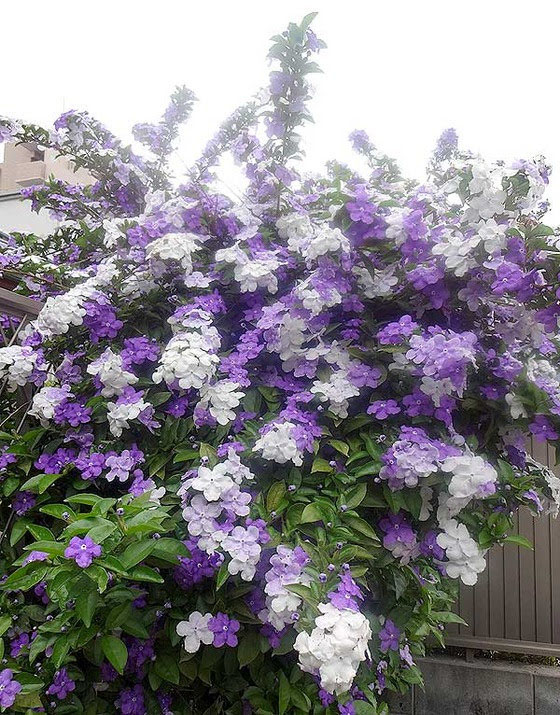
As I am walking through the narrow alleys of the town, Nioibanmatsuri(Brunfelsia latifolia) is blooming like it sticks out of the road. If you write Nioibanmtsuri in Kanji, it will be “匂蕃末莉”. Nioibanmatsuri has a nice scent, so you can understand the “匂(nioi)” first. The next kanji “蕃(ban)” is rarely seen, but it means “foreign”. Nioibanmatsuri is native to Brazil. The last “末莉” comes from Sanskrit and means jasmine. As a whole, Nioibanmatsuri is a “flower with a nice scented foreign jasmine-like scent.” It’s a flower with a really argumentative name. Nioibanmatsuri has a purple color immediately after it blooms, but the color gradually fades and eventually becomes white. You can also enjoy purple and white flowers with one plant, and the appearance is like a gradation, it is cool and very beautiful. The English name is also interesting and has the name “Yesterday-today-and-tomorrow”.
町中の細い路地を歩いていると、道にはみ出すようにニオイバンマツリが花を咲かせています。ニオイバンマツリを漢字で書くと「匂蕃末莉」となります。ニオイバンマツリは良い香りがするのでまず「匂」、これは分かります。次の「蕃」という漢字はあまり見かけませんが「外国」を意味します。ニオイバンマツリはブラジル原産です。最後の「茉莉」とは、サンスクリット語からきていてジャスミンのことです。つまり、ニオイバンマツリは「良い香りのする外来のジャスミンのような香りがする花」ということになります。実に理屈っぽい名前を持った花ですね。ニオイバンマツリには開花してすぐは紫色をしていますが、その色がだんだんと薄れて行き最終的に白くなります。1つの株で紫と白の花を楽しむこともでき、その姿はグラデーションのようで涼しげでとても美しい花です。英語名も面白く「Yesterday-today-and-tomorrow」という名前がついています。
